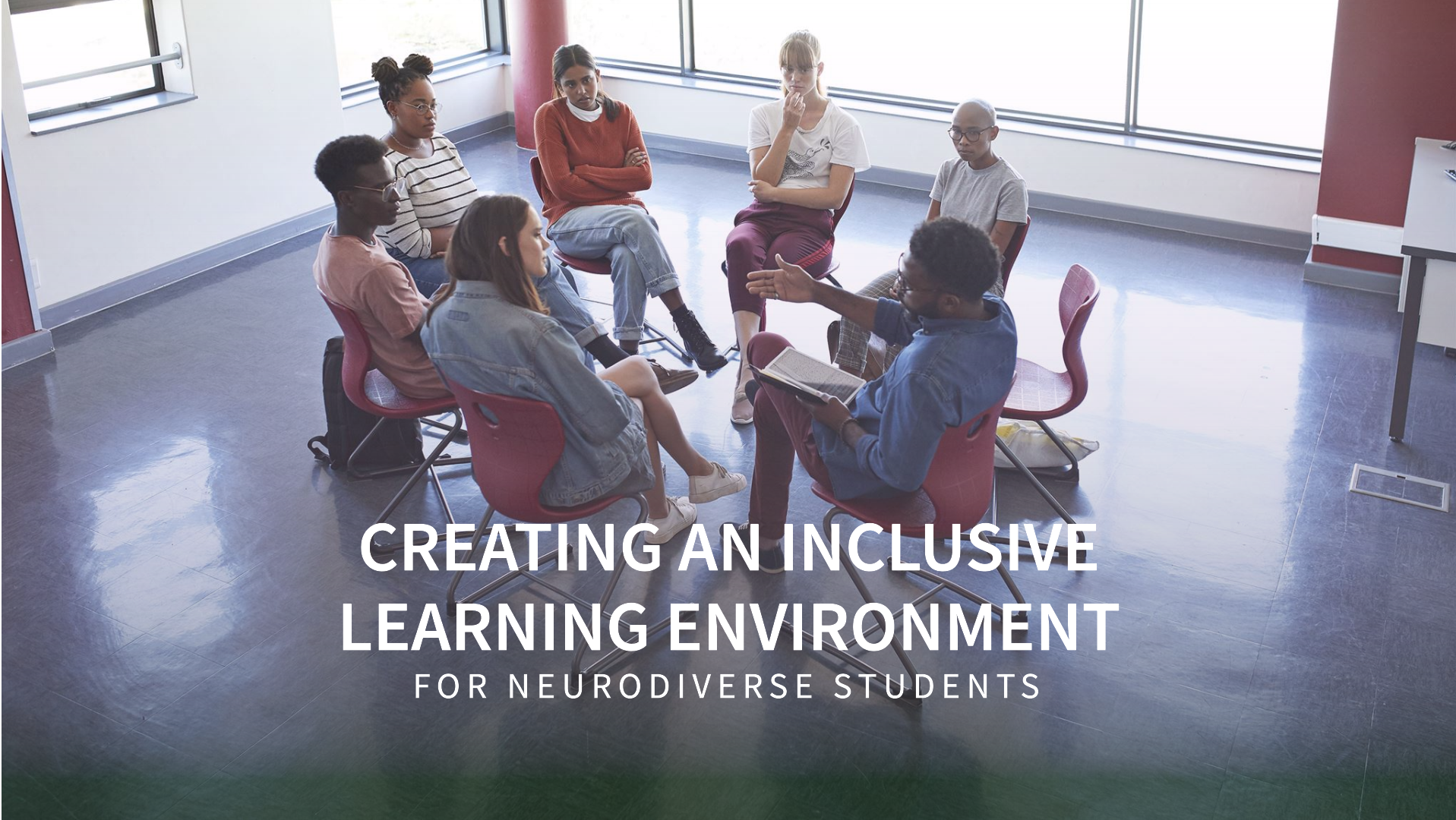
Higher education is a gateway to opportunity and growth, but for neurodiverse students—those with Autism, ADHD, Dyslexia, and other neurological variations—traditional learning environments can pose significant challenges. These students bring unique perspectives and strengths to the classroom, but they may also require adjustments to thrive academically and socially.
Creating an inclusive learning environment isn’t just about accommodating needs—it’s about fostering a culture where all students feel valued, supported, and empowered to succeed. Here are strategies educators can use to build classrooms that work for everyone.
1. Understand Neurodiversity and Its Strengths
The first step to inclusivity is understanding. Neurodiverse students experience and process the world differently, and their traits often come with unique strengths:
-
Students with Autism might excel in pattern recognition or detailed analysis.
-
Those with ADHD often bring creativity, energy, and adaptability.
-
Dyslexic learners may think visually or approach problems from innovative angles.
Recognising these strengths allows educators to shift the focus from “challenges” to “contributions.” Celebrate diversity as an asset to the classroom and openly acknowledge the value of neurodivergent perspectives.
2. Use Universal Design for Learning (UDL)
Universal Design for Learning (UDL) is a framework that creates flexible learning environments to accommodate diverse needs. Key principles include:
-
Multiple Means of Representation: Present information in various formats, such as visual aids, videos, and hands-on activities.
-
Multiple Means of Action and Expression: Allow students to demonstrate understanding in ways that suit them, such as written work, presentations, or creative projects.
-
Multiple Means of Engagement: Offer choices in learning activities to align with students’ interests and motivations.
By embedding flexibility into your teaching practices, you can make learning more accessible for all students.
3. Provide Clear and Consistent Communication
Neurodiverse students often benefit from structured and predictable environments. Here’s how to make communication clearer:
-
Break Down Instructions: Use step-by-step instructions for assignments and activities, avoiding ambiguity.
-
Visual Supports: Supplement verbal communication with written or visual aids, such as slides or diagrams.
-
Advance Notice: Give students a heads-up about changes in schedules, assignments, or expectations.
Consistency builds trust and helps reduce anxiety for students who thrive on routine.
4. Create a Sensory-Friendly Environment
Some neurodiverse students are sensitive to sensory inputs, such as bright lights, loud noises, or crowded spaces. Small adjustments can make a big difference:
-
Reduce unnecessary noise or provide noise-cancelling headphones.
-
Use natural or adjustable lighting to minimise harsh glare.
-
Offer quiet zones or seating options for students who need a less stimulating environment.
5. Encourage Flexible Participation
Not all students engage with learning in the same way. For neurodiverse learners, participation might look different:
-
Allow alternative ways to participate, such as contributing to discussions via chat or submitting questions in writing.
-
Respect communication differences and avoid putting students on the spot if they seem uncomfortable.
Flexibility helps students feel included without forcing them to conform to traditional expectations.
6. Foster a Culture of Peer Support
Inclusive classrooms thrive on collaboration and empathy. Encourage students to support one another by:
-
Pairing students for peer mentoring or group work.
-
Educating the class about neurodiversity to build understanding and reduce stigma.
-
Facilitating open discussions about diverse learning styles and strengths.
When peers value and respect neurodiverse classmates, everyone benefits from a richer learning experience.
7. Offer Regular Feedback and Support
Feedback is essential for learning, but neurodiverse students may need more frequent or detailed input.
-
Be Specific: Focus on actionable steps rather than general comments.
-
Check In Regularly: Provide progress updates and ask how students are feeling about the course.
-
Be Open to Adjustments: If something isn’t working for a student, collaborate on alternative approaches.
8. Collaborate with Support Services
Leverage the expertise of disability services, learning support teams, and academic advisors. These professionals can provide insights and resources to help you support neurodiverse students effectively. Encourage students to access these services and normalise seeking help as a sign of strength.
9. Model Empathy and Patience
As an educator, your attitude sets the tone for the classroom. Show empathy and patience by:
-
Listening actively to students’ concerns.
-
Avoiding assumptions about abilities or intentions.
-
Acknowledging the effort students put into navigating challenges.
When students feel seen and understood, they are more likely to engage and succeed.
10. Reflect and Improve
Inclusivity is an ongoing process. Take time to reflect on your teaching practices and seek feedback from students:
-
What worked well?
-
What could be improved?
-
Are there additional needs you can address?
Continual improvement ensures your classroom remains a welcoming and effective space for all learners.
Conclusion
Fostering an inclusive learning environment for neurodiverse students isn’t just about accommodation—it’s about creating opportunities for everyone to thrive. By embracing diversity, using flexible teaching methods, and prioritising empathy, educators can unlock the potential of every student.
Inclusive classrooms don’t just benefit neurodiverse learners—they enrich the entire educational experience, fostering creativity, collaboration, and innovation.
Let’s work together to build a future where all students feel valued, supported, and empowered to succeed.
Actionable Insight: Start with one change—whether it’s implementing UDL principles, adjusting communication, or creating a sensory-friendly space—and build from there. Small steps lead to meaningful impact.
Leave a Reply